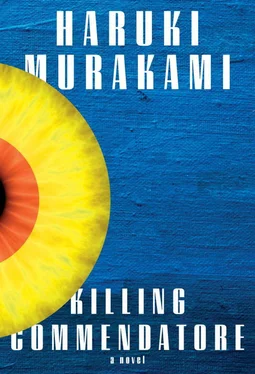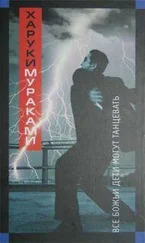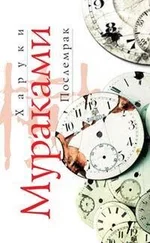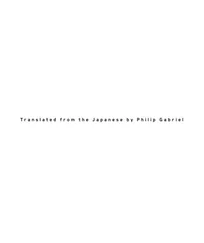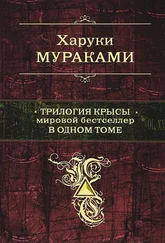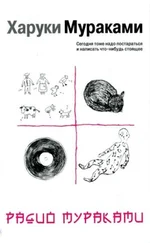“If you don’t mind me asking, what sort of work are you involved in?”
“I don’t mind at all. It’s just—hard to talk about.”
“If you’d rather not…”
“It’s a little embarrassing, actually,” he said. “Right now I’m not working at all. Not that I’m getting unemployment insurance or anything, but officially I’m unemployed. I spend a few hours each day online in my office in stock trading and currency exchange, though we’re not talking large amounts. More a hobby or to kill time. Training to keep my mind active. Like a pianist practices scales every day.”
Menshiki took a quiet, deep breath and recrossed his legs. “In the past I started and ran a tech-related company, but not long ago I decided to sell all my stock and step down. The buyer was a major telecommunications company. That sale meant I have enough savings to live on for a while. I used that opportunity to sell my house in Tokyo and move here. Basically, I’m retired. My savings are divided among several overseas banks, and I move those around depending on variable exchange rates, so I make a bit of a profit that way.”
“I see,” I said. “Do you have a family?”
“No family. I’ve never been married.”
“So you live in that huge house all by yourself?”
He nodded. “I do. At this point I have no household staff. I’ve lived by myself for a long time and am used to doing housework. But since it’s such a big place, I can’t clean it all myself, so I hire a cleaning service to come in once a week. Other than that, I pretty much take care of everything. What about you?”
I shook my head. “I’ve been on my own less than a year. Still an amateur.”
Menshiki gave a slight nod, but didn’t ask any questions or offer any comments. “Are you close to Tomohiko Amada?” he asked.
“No, I’ve never even met him. I was with his son in art school, and through that connection he asked me if I wanted to take care of the vacant house. Some things came up in my life and I didn’t have any place to live then, so I decided to accept the offer. For the time being.”
Menshiki gave a few more small nods. “It’s not very convenient for anyone working at a regular job, but for folks like you two, I imagine it’s a wonderful environment.”
I gave a forced smile. “We might both be painters, but Tomohiko Amada and I are on totally different levels. It’s embarrassing to even be mentioned in the same breath as him.”
Menshiki raised his head and looked at me, his eyes serious. “It’s too soon to say that. You might become a well-known artist someday.”
There was nothing I could say to that, so I was silent.
“Sometimes people go through huge transformations,” Menshiki said. “They obliterate the style they’ve worked in, and out of the ruins they rise up again. Tomohiko Amada was that way. When he was young he painted Western-style work. You’ve heard about this, I’m sure?”
“I have. Before the war he was a promising young painter of Western-style art. But after he came back from studying in Vienna he changed to being a Japanese-style artist, and after the war was amazingly successful.”
“The way I see it,” Menshiki said, “there’s a point in everybody’s life where they need a major transformation. And when that time comes you have to grab it by the tail. Grab it hard, and never let go. There are some people who are able to, and others who can’t. Tomohiko Amada was one who could.”
A major transformation. The words suddenly made me think of Killing Commendatore . And the young man stabbing the Commendatore to death.
“Do you know much about Japanese-style painting?” Menshiki asked.
I shook my head. “I’m basically a layman. I attended lectures on it when I was in art school, but that’s the extent of my knowledge.”
“This is a very basic question, but how is Japanese art defined, professionally?”
“It’s not so easy to define. It’s usually taken to mean paintings done using glue and pigment and foil leaf. And done not with a paintbrush, but with a writing brush. In other words Japanese paintings are defined mainly by the materials used to paint them. The transmission of ancient, traditional techniques is one feature, though there are lots of Japanese paintings done using avant-garde techniques, and with colors, too, there is a lot of use of new materials. So the definition has steadily become increasingly vague. But as far as Tomohiko Amada’s paintings go, they’re classic Japanese art. Archetypal, you might call them. They’re done in a style that’s recognizably his own, of course. I just mean as far as techniques are concerned.”
“So you’re saying that if the definition based on materials and techniques gets vague, all you’re left with is the mental aspect, right?”
“Maybe so. But the mental aspect of Japanese paintings isn’t easily defined. They are, from the beginning, rather eclectic.”
“By eclectic you mean…?”
I searched the depths of memory and recalled what I’d learned in art history class. “The Meiji Restoration took place in the latter half of the nineteenth century, and along with other aspects of Western culture Western art also was introduced into Japan, but until then the genre of ‘Japanese painting’ didn’t actually exist. The term didn’t even exist. Just like up till then the name of the country, Japan, was hardly ever used. With the appearance of Western art from abroad, the concept of Japanese art was born as a way of asserting something that could be distinguished as standing in opposition to Western art. What had existed up until then in various forms and styles was, for the sake of simplicity, lumped together under the new name of ‘Japanese painting.’ Of course, there were some types of painting that were excluded from that and fell into decline. Chinese ink paintings, for instance. The Meiji government established and cultivated so-called Japanese painting as a kind of national art, as part of Japanese cultural identity that could stand shoulder to shoulder with Western culture—the ‘Japanese spirit’ part of the popular slogan at the time—‘Japanese Spirit with Western Learning.’ What had been everyday designs, arts and crafts designs such as paintings on folding screens and fusuma sliding doors and bowls and plates, were now set in frames and featured in art exhibitions. To put it another way, items done in a natural style as part of everyday life were now accommodated to the Western system and elevated to the status of ‘works of art.’”
I paused for a moment and studied Menshiki’s face. He seemed to be listening closely to what I said. I went on.
“Tenshin Okakura and Ernest Fenollosa were at the forefront of this movement. What happened with art could be counted as one of the amazing success stories during this period when aspects of Japanese culture were rapidly being reconfigured. A similar process was taking place in the worlds of music, literature, and thought. It must have been a pretty hectic time for Japanese back then, since they had tons of important work they had to accomplish in a very short period of time. Looking back on it now, I’d say we did a pretty clever and skillful job of it. The merging and compartmentalizing of Western aspects and non-Western aspects took place very smoothly. Maybe Japanese are intrinsically suited to that kind of process.
“So Japanese painting wasn’t clearly defined originally. You might say it was a concept based on a vague consensus. There wasn’t initially a clear division, and it only came about tangentially, when external and internal pressure created one.”
Menshiki seemed to be considering all this. “It might have been vague,” he finally said, “but this was a consensus born of necessity, right?”
Читать дальше
